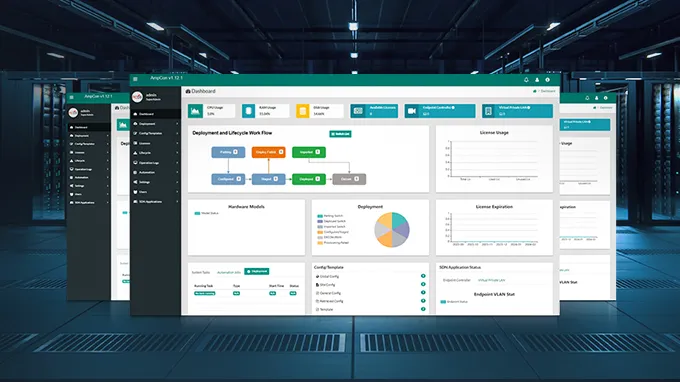Guide for Optical Line Protection in Modern Networks
In today's fast-paced world, reliable networks are crucial. Whether we're streaming videos, conducting business, or keeping in touch with loved ones, uninterrupted connectivity is vital. However, network disruptions can lead to significant consequences, such as financial losses for businesses and frustration for individuals. That's where optical line protection (OLP) steps in. OLP continuously monitors our network infrastructure, swiftly addressing any issues to ensure resilience and reliability. In this article, we'll explore the concept of OLP and its importance in modern networks, uncovering its practical applications and essential role in maintaining connectivity in our interconnected world.
Understanding Optical Line Protection
OLP is crucial for ensuring reliable and seamless connectivity in optical fiber networks. By utilizing specialized equipment like optical line protection switches, OLP constantly monitors the primary fiber route for faults. If an issue arises, OLP quickly reroutes traffic to a secondary path, maintaining uninterrupted connectivity. This rapid switching, occurring within milliseconds, minimizes disruptions to network performance and user experience. With backup routes in place, OLP effectively reduces downtime and ensures continuous network connectivity, even during fiber cuts or equipment failures. Integrating optical network devices further enhances the reliability and efficiency of OLP systems, ensuring robust network protection and smooth operations.
Types of Optical Line Protection Systems
In fiber optic network protection, various OLP strategies like 1+1, 1:1, and OLP BIDI play crucial roles in ensuring uninterrupted communication and securing data transmission.
1+1 OLP
1+1 OLP, also known as full-duplex protection, involves deploying duplicate fiber routes for both the primary and secondary paths. The traffic is simultaneously transmitted through both routes, and the receiver chooses the signal with the highest quality. In case of a failure on the primary route, the receiver seamlessly switches to the secondary route without any service interruption. 1+1 OLP, with low cost and fast switching speed, is commonly used in applications where service disruptions are not tolerable, such as high-bandwidth short-distance data transmission, voice, and video communications, or critical infrastructure networks.

1:1 OLP
1:1 OLP, on the other hand, employs dedicated fibers for both the primary and secondary paths. The traffic is transmitted through the primary path, and an identical copy is simultaneously sent through the secondary path. The receiver continuously compares the signals from both paths and instantly switches to the secondary path if the primary signal quality deteriorates beyond a predefined threshold. 1:1 OLP has low insertion and high security, suitable for situations where any degradation in signal quality can have significant consequences, such as in mission-critical trunk/local OTN, financial transactions, or sensitive data transmission.

BIDI OLP
BIDI OLP operates by transmitting signals bidirectionally while selectively receiving them, facilitating two-way communication over a single optical fiber. This technology serves as the foundation for optical line protection, especially valuable in scenarios with limited optical fiber resources. It becomes extremely valuable when protecting critical lines during a shortage of optical core resources. This solution provides versatile support, including backup fiber monitoring, and can be managed through options such as serial ports, network management systems, and panel buttons. Notable features include the ability to selectively transmit and receive signals, even simultaneously, as well as a lock function when no optical signals are present, ensuring efficient and low-loss switching.

Benefits of Optical Line Protection
From the introduction above, we know that OLP can monitor the primary fiber route and achieve automatic switching. Then what benefits do optical line protection implementation in modern networks offer for organizations? Let's explore some of the key advantages:
1. Enhanced Network Performance: With OLP in place, not only does it provide real-time monitoring of fiber power levels to aid in diagnosing network issues and swiftly pinpointing their source, but it also optimizes network performance. This optimization is achieved through the seamless and efficient rerouting of traffic, thereby establishing a redundant infrastructure. This redundancy effectively guards against single points of failure, such as fiber cuts or equipment failures, while simultaneously enhancing overall data transfer speeds and network resilience.
2. Reduced Service Disruptions: In case of a fiber failure, optical line protection swiftly redirects traffic to backup routes, ensuring reliable fiber protection. This minimizes disruptions to services and downtime, maintaining uninterrupted network availability and avoiding costly interruptions in business operations.
3. Streamlining Network Management: Streamlining Network Management: By integrating OLP with advanced optical switch capabilities, the system automates essential functions such as switching and monitoring. This strategic fusion simplifies the complexities of network management and maintenance, diminishing the need for manual intervention. As a result, overall management efficiency and responsiveness are markedly improved. With smoother operations and swifter resolution of network issues, businesses can maintain optimal performance and reliability.
4. Customer Satisfaction and Loyalty: OLP ensures continuous network connectivity and stability, reducing the risk of service interruptions, allowing customers to always enjoy reliable communication services. This sustained high-quality service not only enhances customer trust and satisfaction with the service provider but also promotes long-term cooperation between customers and service providers, thereby enhancing customer loyalty.
Conclusion
In the modern era of digital connectivity, it is crucial for businesses to consider the importance of optical line protection, an essential part of OTN, in maintaining a competitive edge. With optical line protection, you can protect your network from unexpected disruptions and pave the way for a seamless digital future with enhanced network performance and customer satisfaction.
You might be interested in
Email Address

-
PoE vs PoE+ vs PoE++ Switch: How to Choose?
May 30, 2024














